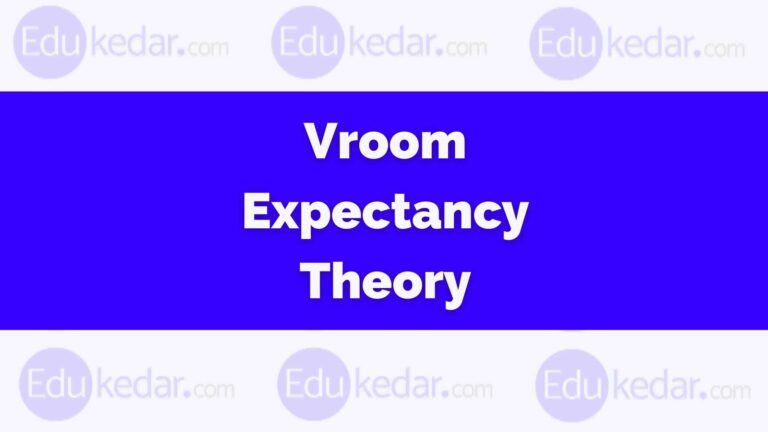
Like any other theory of motivation, Vroom’s expectancy theory is one of the most relevant and widely used motivation theories. In this article, we will get a complete insight into the vroom expectancy theory.
► What is Vroom Expectancy Theory?
Vroom expectancy theory was given by Victor H Vroom in 1964.
The vroom expectancy theory is also known as Instrumentality theory or valance instrumentality expectancy theory. It is a process theory of motivation.
The vroom expectancy theory propounded that the work effort of an individual is directed towards the expected behavior that leads to desired outcomes.
In simple words, we can say that the vroom expectancy tells us the correlation between efforts and performance to get the desired reward.
In this theory, employees are considered rational human beings and before they perform their task or job they think about what they have to do to get a reward and how much the reward means to them.
► Assumptions of the Vroom Exceptency Model
- Individual behavior is affected by multiple variables.
- Individuals are considered rational and conscious human beings.
- every individual has different needs and desires.
- Individuals alter their behavior based on their expectations which help them to achieve their desired goal.
He stated that effort and performance are directly linked to personal motivation and he uses expectancy, instrumentality, and valence as a variable to account for his theory.
◉ Expectancy
Expectancy means that an individual assesses the probability that a particular level of effort will bring a particular level or relative of change in his or her performance.
Effort to Performance (E —> P)
◉ Instrumentality
Instrumentality means that if an individual performs better then desired outcome will be achieved.
Performance to Outcome (P —> O)
◉ Valence
Valence refers to the desire of a person with respect to a potential outcome or reward. The reward may be extrinsic ( pay rise, promotion, and other benefits) and intrinsic (satisfaction and self-esteem)
Motivation = Expectancy × Instrumentality × Valence
If any of the variables is low the then motivation level is likely to remain low.
Unlike different theories of motivation which are only limited to satisfying and unsatisfying needs or the nature of work but the vroom expectancy theory implies that employees must analyze the appropriate effort that can result in getting a reward.
This theory guides managers in designing the organizational reward, and goal setting.
Also Read : Theory X and Theory Y
► Example of Vroom Expectancy Theory
- An employee wants a promotion (Valence)
- An employee believes that if he wants a promotion so, he achieves his target and improve his communication skill and become the best among his colleagues (Expectancy)
- Employee improve his communication skill and achieve his yearly target in six months ( Instrumentality)